Fotomats stay in the picture: Rolando's Roadside Roundup
Plus, neon blazes anew at historic Route 66 stop; beloved New Jersey restaurant closes after 68 years; more downtown Reno properties sold
Since I was a kid, when I regularly passed the Fotomat on Route 119 in Elmsford, New York, I have been obsessed with those cute little yellow temples to what was once considered fast, convenient photo developing.
Little me imagined a Rube Goldberg-style laboratory beneath the small hut, spanning much of the space beneath the shopping center’s parking lot, where technicians worked feverishly to finish photos of, say, my birthday party — celebrated across White Plains Road at the Howard Johnson’s Restaurant.
I was also concerned about the well-being of the worker stuck in the hut — men were fotomacs, women were fotomates, and ads from the early 1970s showed a decided preference for fotomates, pointing out that Fotomat puts “girls in our huts who enjoy smiling.”
Where did the photomacs and photomates go when nature called? Surely, there was a commodious lavatory somewhere in that vast underground laboratory beneath all those Ford Country Squires, Dodge Darts and Volkswagen Beetles in the parking lot.
Well, neither scenario 7-year-old me envisioned was true. The laboratory was off site — couriers would pick up the film and return the pictures — and lavatory access depended on the kindness of merchants in the shopping plaza.
At the dawn of Fotomat in the mid-1960s, its core ideas of overnight photo development and convenient drop-off and pick-up service, without having to so much as leave your car, were an innovative extension of drive-thru restaurant service. A newspaper article from 1967 described them as “gnome-like drive throughs.” By 1971, the company went public and there were over 1,000 huts.
The huts recalled a box of Kodak film — with a pyramid on top — and featured blue and red lettering, and also sold products like said company’s film. (There were legal tangles with Kodak, not surprisingly.) The huts were an instant icon, a recognizable building form like a McDonald’s mansard, a Taco Bell mission-style building and, naturally, a Pizza Hut.
By the late 1970s, when I first noticed them, Fotomats were nearing their peak of around 4,000 units. Profits were already starting to ebb. They were coping with changing technology. Fotomat’s fortunes rose along with increased use of cartridge-based Kodak Instamatic 126 film, the development of which was the bulk of Fotomat’s business. That was giving way to widespread use of high-quality 35-millimeter film loaded into better cameras, increasingly automatic and so not as complicated as they used to be. And many shutterbugs weren’t entrusting those precious rolls to Fotomat.
Mini-labs were an increasing threat, too, with the specter of one-hour photo finishing from pharmacies and drug stores in the very shopping plazas that had a Fotomat.
Rest assured, Fotomat fought the good fight, and kept innovating. They offered to transfer your old family movies to videotape, allowing you to retire those Super 8 projectors. They sold blank videotapes to early VCR adopters and, starting in 1979, they offered home video rental and sales services. Customers called in orders from a catalog and picked up their tapes later at a Fotomat of their choosing.
But mom-and-pop video shops spread quickly, and by the mid-1980s, Blockbuster — using similar colors of blue and yellow — was in some of those same shopping centers.
The slow but inexorable decline was unstoppable, despite the constant attempts to innovate and the support of new ownership by Konica later in the 1980s.
Richard D. Irwin, the chief executive of Fotomat, in 1981 let himself have it when asked by the New York Times to explain Fotomat’s troubles:
The biggest single factor was our own ineptitude,'' Mr. Irwin said. In the rush to create more outlets, management ignored Fotomat's role as a merchandiser. New kiosks were put up near existing ones, cannibalizing sales, he said.
Even if they had figured out a way to stay relevant into the 1990s, digital photography and the rise of camera phones would likely have been the final blow.
When a Fotomat closed, it wasn’t a given that it would be demolished. Their vestigial presence attracted the attention of a new generation of entrepreneurs, who saw those huts as appealing delivery systems for coffee, tobacco, condoms, or for services like watch repair.
This link offer you a nice overview of the repurposed Fotomats of America, and I’ve been to a few over the years. I’d like to photograph many more, but here are two I’ve visited, and one that wasn’t a Fotomat but a knockoff, of which there were many, including those from Fox Photo, famously in a scene from “Back to the Future.”
Fotomat turned watch-repair shop, Freehold, New Jersey
This old Fotomat has been turned into a watch-repair hut in Freehold, New Jersey.
Joseph Barjudinas moved into the the building about 20 years ago, he told the Asbury Park Press.
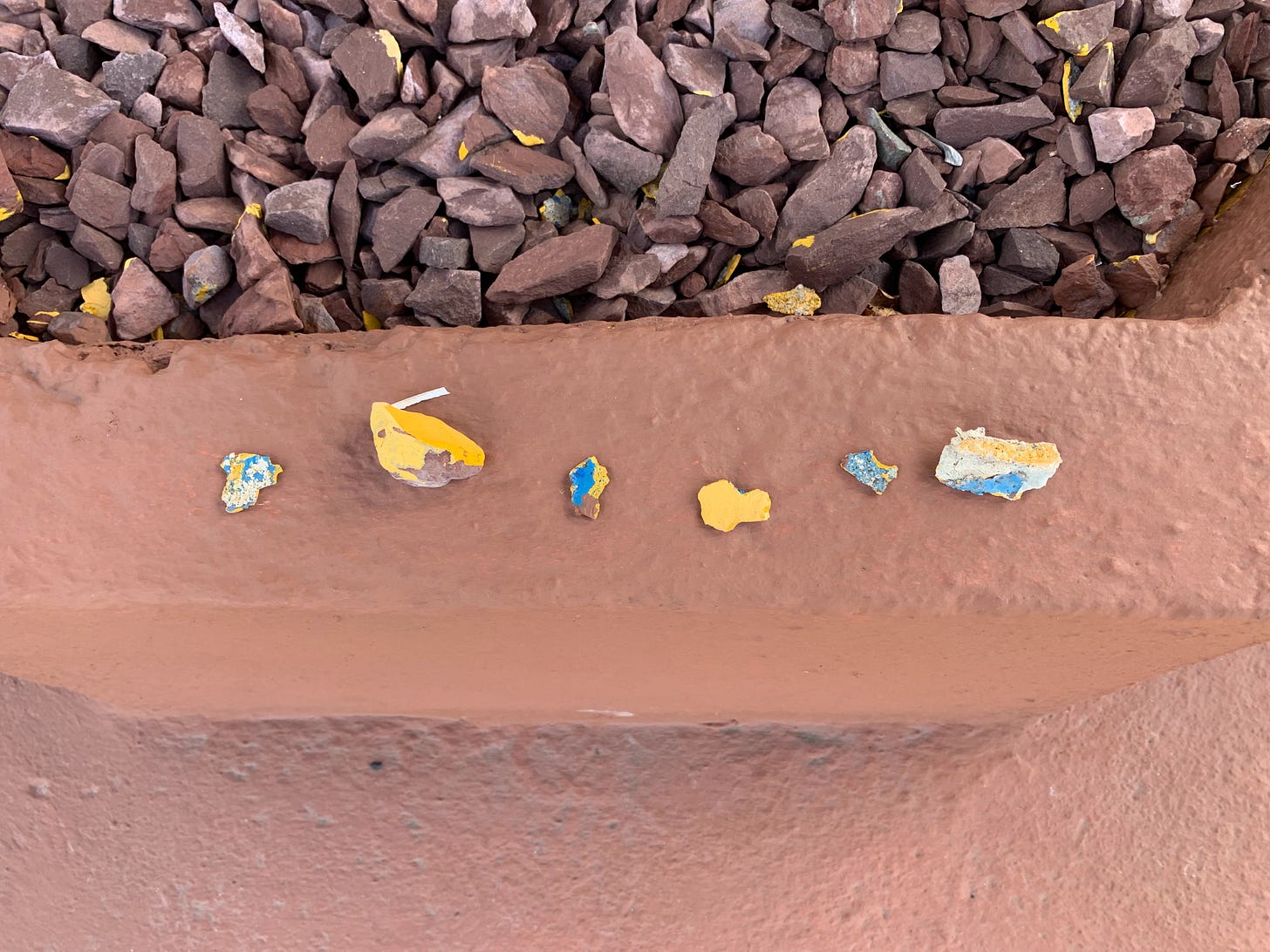
Barjudinas found his dream spot at 4345 Route 9 in Freehold, in the Pond Road Shopping Center. Anyone know it?
"I always knew I didn't need a big place to repair watches," he explains. "I found the landlord, and it was just $300 a month to rent the place back then. This is a one-man operation, and it's a busy location. It's the perfect setting."
Fotomat turned tobacco kiosk, Glendale, California
I spotted this one on a trip to Southern California in 2016. This old Fotomat has been turned into the House of Tobacco.
The rooftop is impossible to mistake!
MAP: Visit this former Fotomat
Abandoned photo kiosk, Rosendale, New York
This hut is often mistaken as a former Fotomat, but pay close attention to the roof and the size — it’s close but no cigar.
This kiosk, abandoned in a shopping center in Rosendale, New York, used to be called Foto Factory, following a similar format as Fotomat.
It’s fascinating how such a small building can be so creepy, complete with the creaky door still in place.
MAP: Visit this former Foto Factory
Are there repurposed Fotomats near you? Please let me know in the comments.
Related: My pal Heath Racela explores Fotomats in a recent newsletter!
Related: Explore the former Picture Islands of upstate New York, via Debra Jane Seltzer’s great roadarch.com! Scroll toward bottom of the link.
Sign spotlight: Rancho Sierra Motel in Reno
One of my favorite signs in Reno belongs to the Rancho Sierra Motel. Now that motel, used as long-term housing, has been purchased as part of plans to remake downtown Reno.
Reports the Reno Gazette Journal:
Jacobs Entertainment continues to grow its sizable — and at times controversial — downtown Reno real estate portfolio with the purchase of more old motel properties.
The Sands Regency hotel-casino owner and Reno Neon Line District developer bought the Rancho Sierra Motel in a deal involving three downtown Reno parcels on Sept. 19, according to records obtained from Washoe County. All three parcels were sold by Bajwa Properties LLC.
The purchase is the latest in a series that began in 2017 as part of the developer’s plan to remake the area into a live-work-play complex known as Reno Neon Line District. But the demolition of buildings with no immediate plans to build something new has raised concerns.
Read the full story HERE.
I documented the area before the demolitions began, and this photo is from that visit in June 2014.
Neon dazzles at Boots Court, a restored Route 66 icon; here’s what else you can do in town
It isn’t every day we get good news like this. Restoration work is well underway at the historic Boots Court motel in Carthage, Missouri. On Wednesday night, the restored neon was flipped on — and people were flipping out with joy!
A portion of the motel is now open, but not the Clark Gable room!
On my Route 66 road trip in 2013, I had the pleasure of stopping at Boots for a quick photo, below.
If you happen to be in Carthage, may I recommend another stop in town?whisler’s The photogenic Route 66 Drive-In!
The theater is closed for the season, but you can always grab a burger at Whisler’s, which will be celebrating its 70th anniversary next year!
Another good sign you’ll want to shoot while in town belongs to the Kel-Lake Motel!
And one more tip! In nearby Carterville is the Supertam on 66 Ice Cream Parlor and Superman Museum. It had a brush with kryptonite when the founder, beset with health woes, looked to sell, imperiling his collection of Superman memorabilia. But fortunately, the museum is in new hands.
It was, alas, closed on the day my friends and I stopped by in June 2013.
Want more Route 66 news? Need advice on what to see? I’m working on a Mother Road list and will be sharing it here. Make sure you subscribe for this and other exclusive Retrologist content!
Notes From the Road
Beloved Italian restaurant in Ocean City, New Jersey, closes after 68 years. [6ABC]
Diners on the move, Part One! The long-shuttered Trolley Car Diner in Mount Airy, outside Philadelphia, withering away in the elements, is being moved into storage. [NBC News]
Diners on the move, Part Two! Bishop’s 4th Street Diner in Newport, Rhode Island, was also moved to make way for a gas-station expansion. Sadly I never got to visit this one. [Newport Daily News] [Earlier story on the closure]
Two weeks ago, I told you about the sad closure of Mel’s Tearoom, a 77-year-old beauty in New Brunswick, Canada, I so wish I had visited. Fortunately, the sign has been saved and will be moved to another business in town. [CTV News]
Restaurants from 1992 are now considered historic, a reality check for me! Nevertheless, here’s some good news about Nana’s restaurant in Durham. [WRAL]
The Eat-Rite in St. Louis closed a few years ago. A new owner has stepped in and reopened the business, which is so wonderful to see. The name was changed too, but I so wish the iconic sign had been preserved. [KMOV]

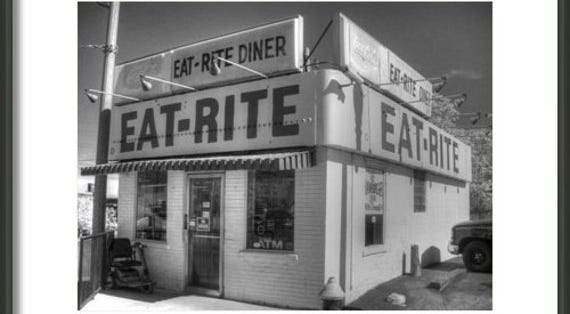
An iconic Downtown Los Angeles building famous recently for hosting a Banksy — and a hundred years ago for hosting silent-film actor Harold Lloyd hanging from the hands of a big clock in “Safety Last!” — is on the auction block. [LA Downtown News]
Tombstone celebrates 60 years as a registered national historic landmark. [My Herald Review]
Group aims to revive nearly 100-year-old theater in Nevada, Iowa. [KCCI]
On devastated Sanibel Island, a landmark lighthouse survives Hurricane Ian’s wrath — but it’s definitely on shaky ground. [WSLS]
Explained: The allure of Wisconsin’s Pine Cone Travel Plaza. I’m certainly intrigued after reading this. [On Milwaukee]





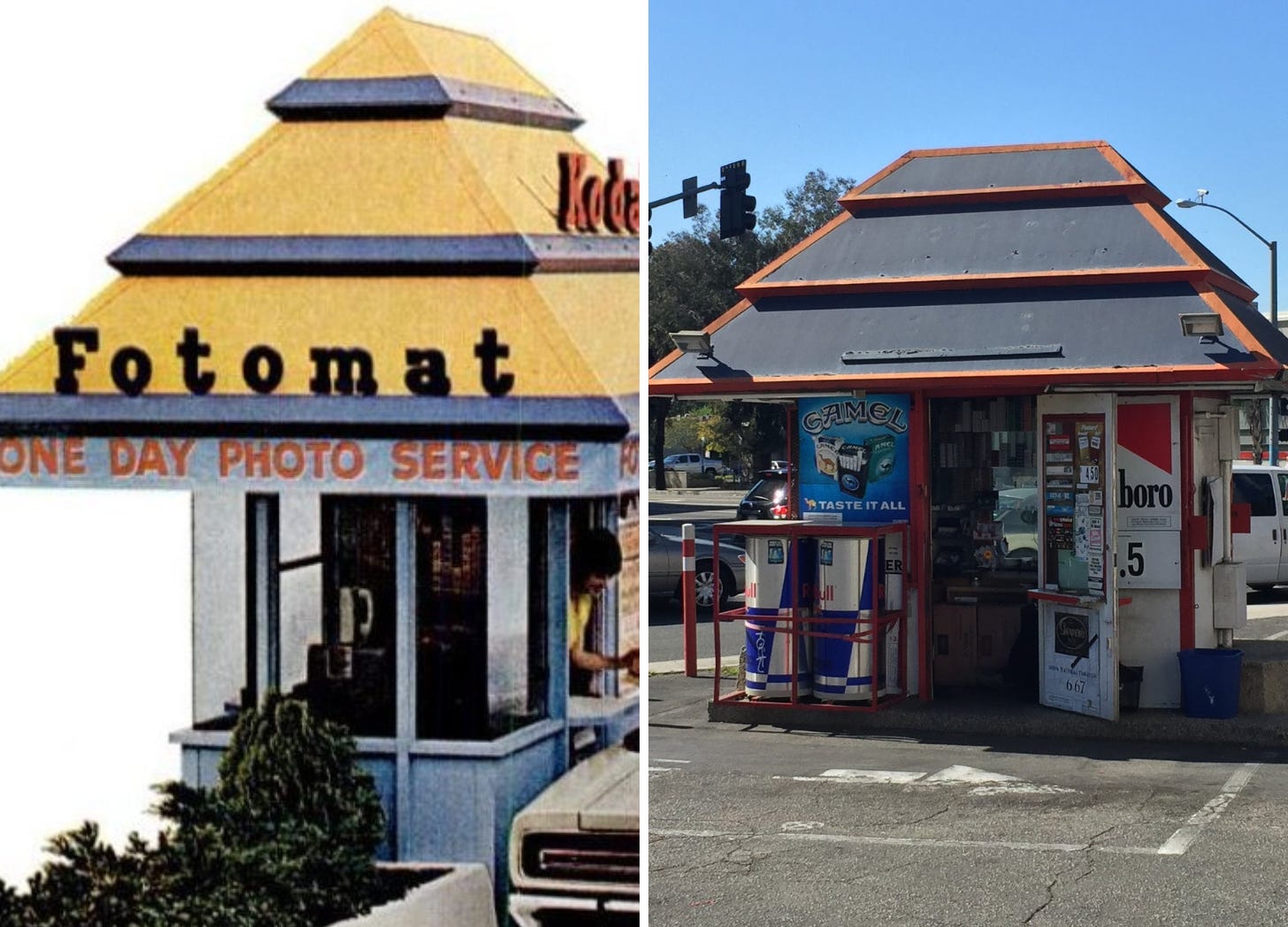

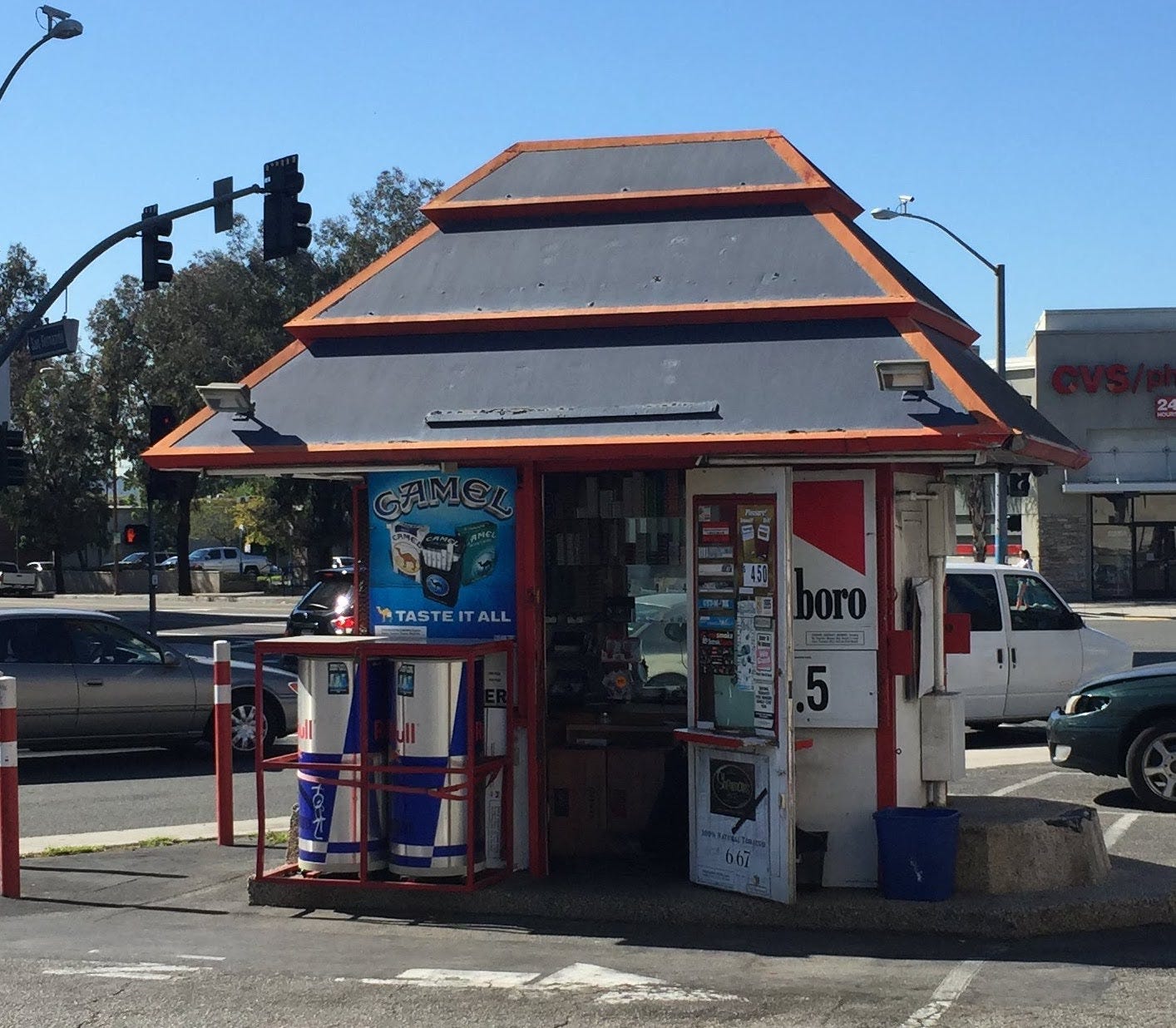
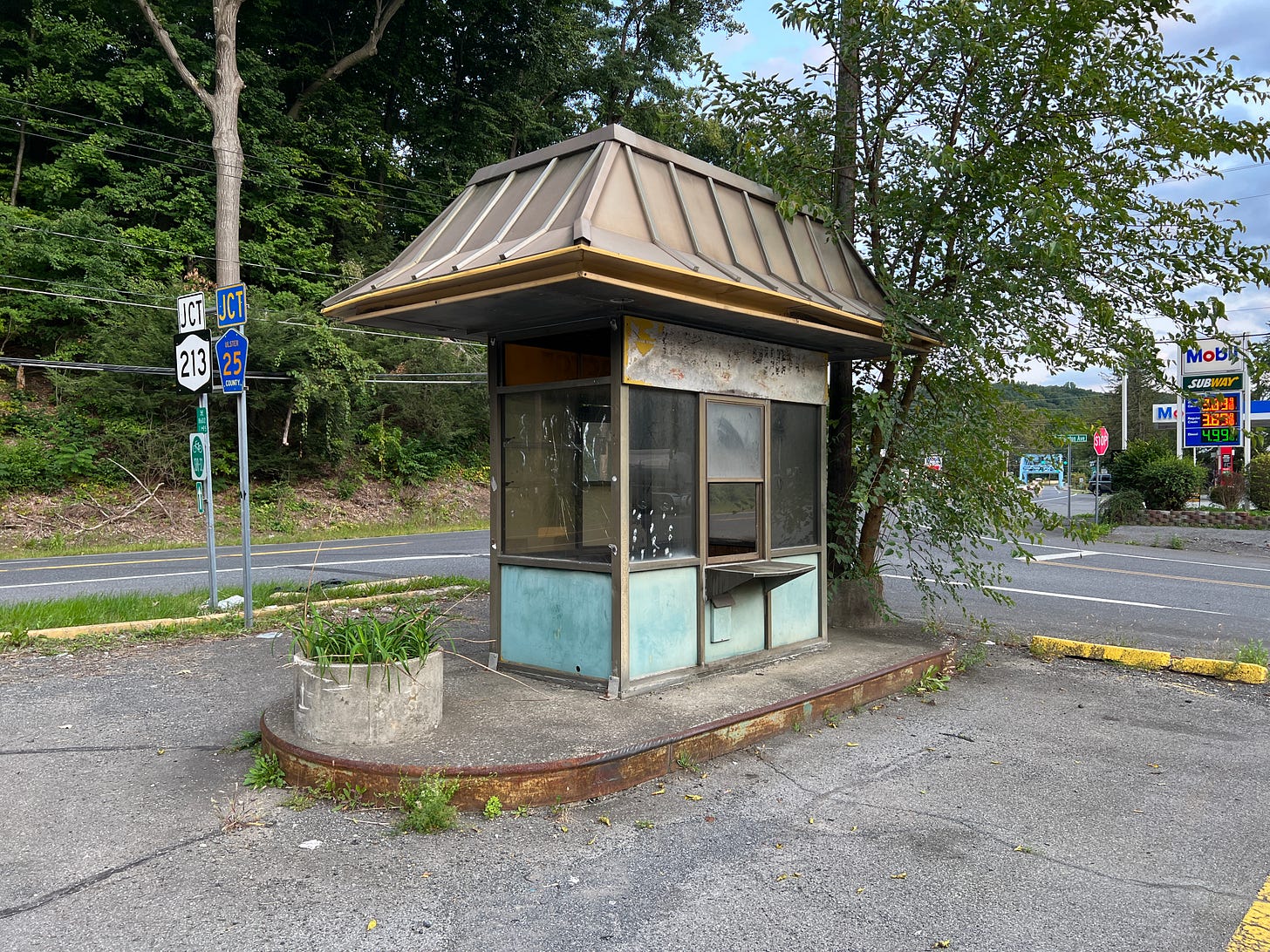
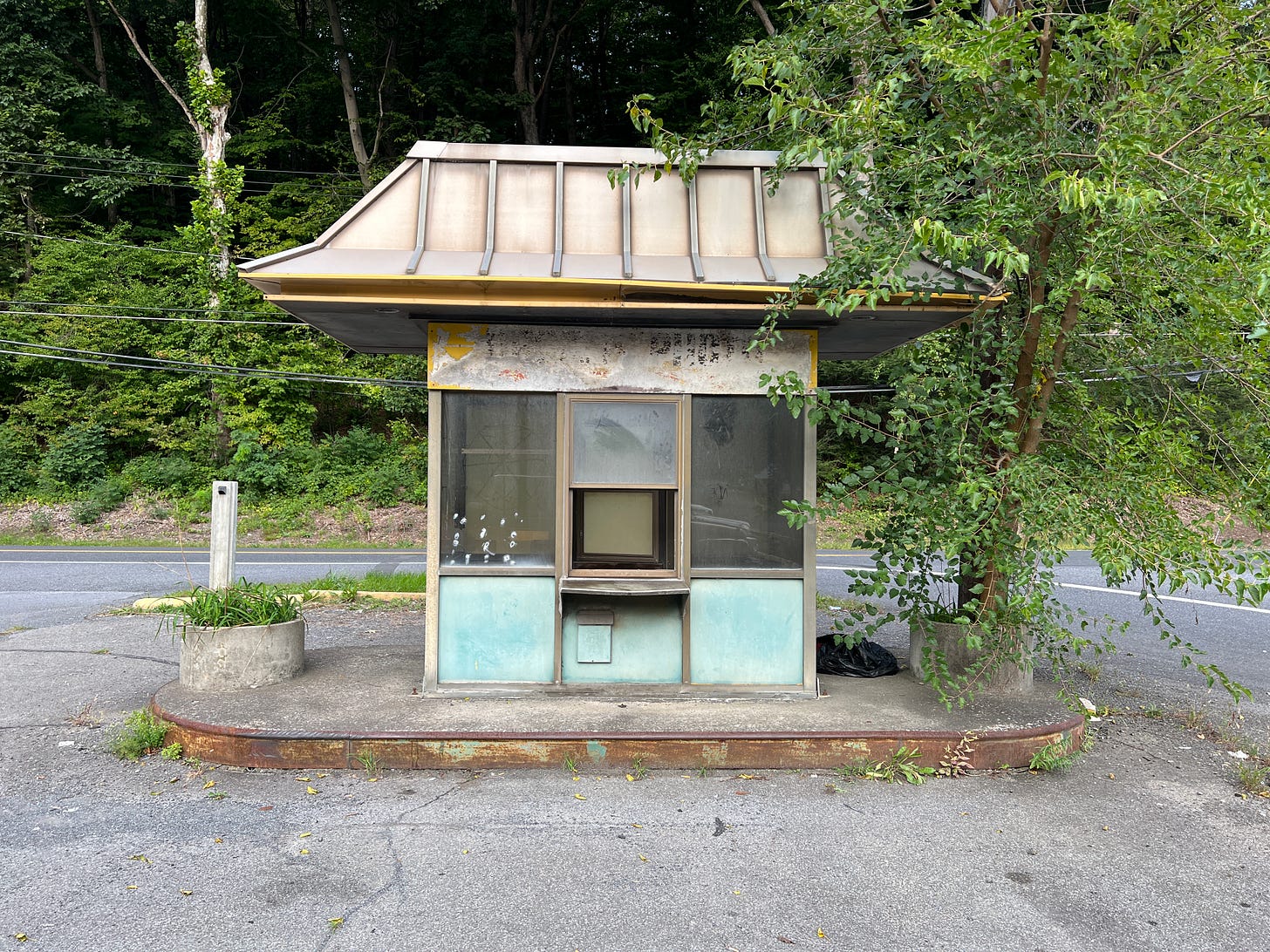
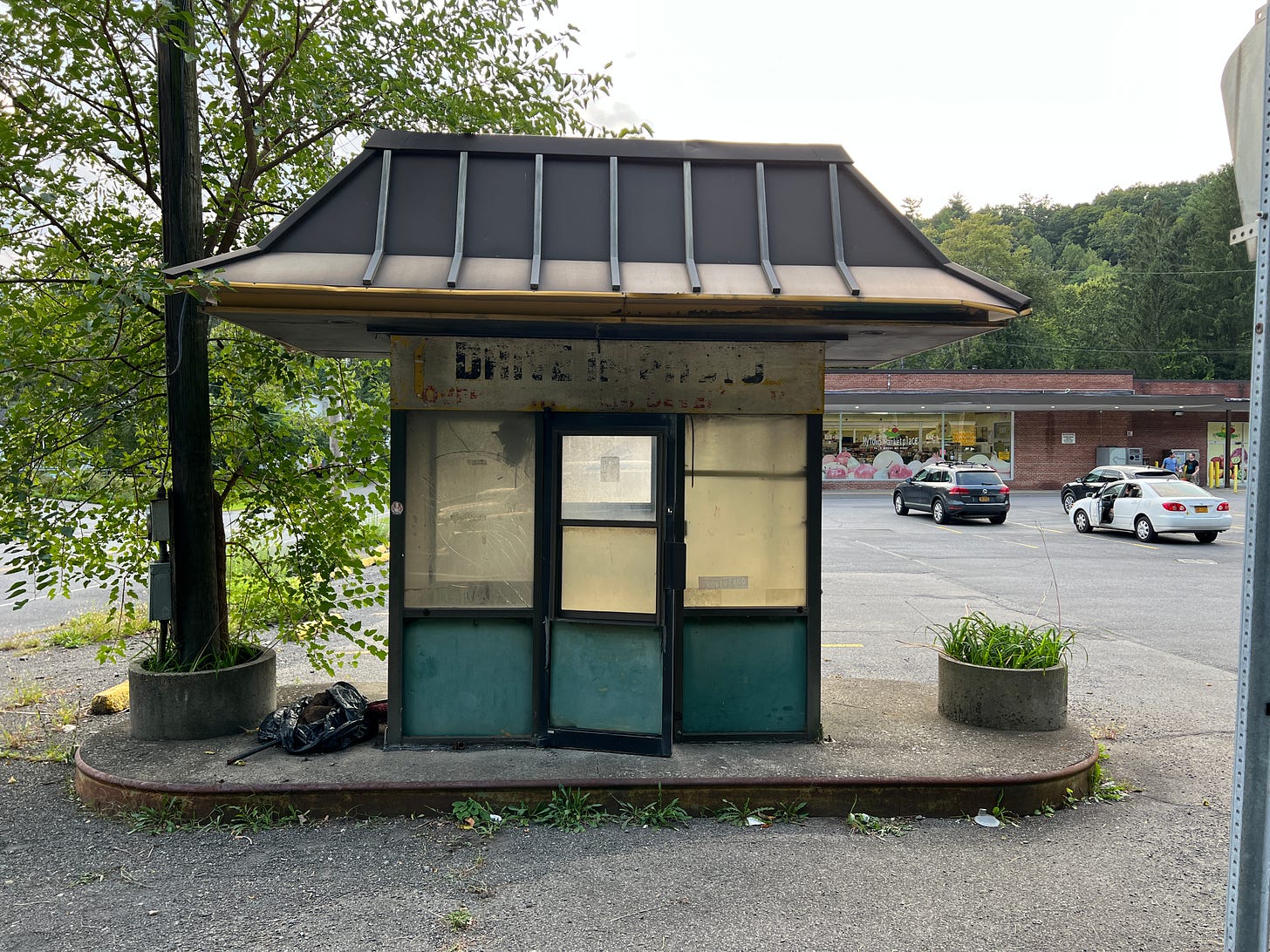
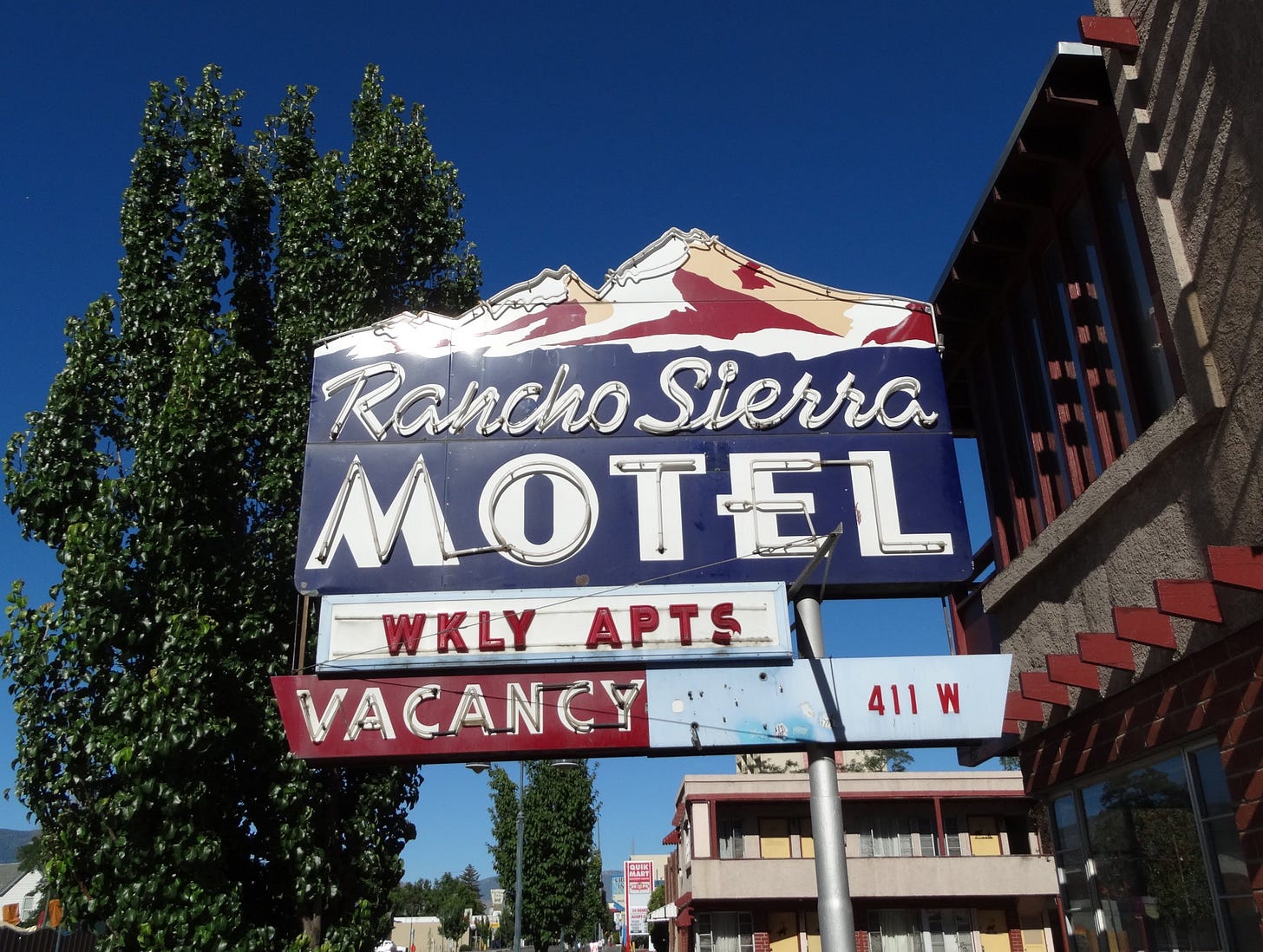



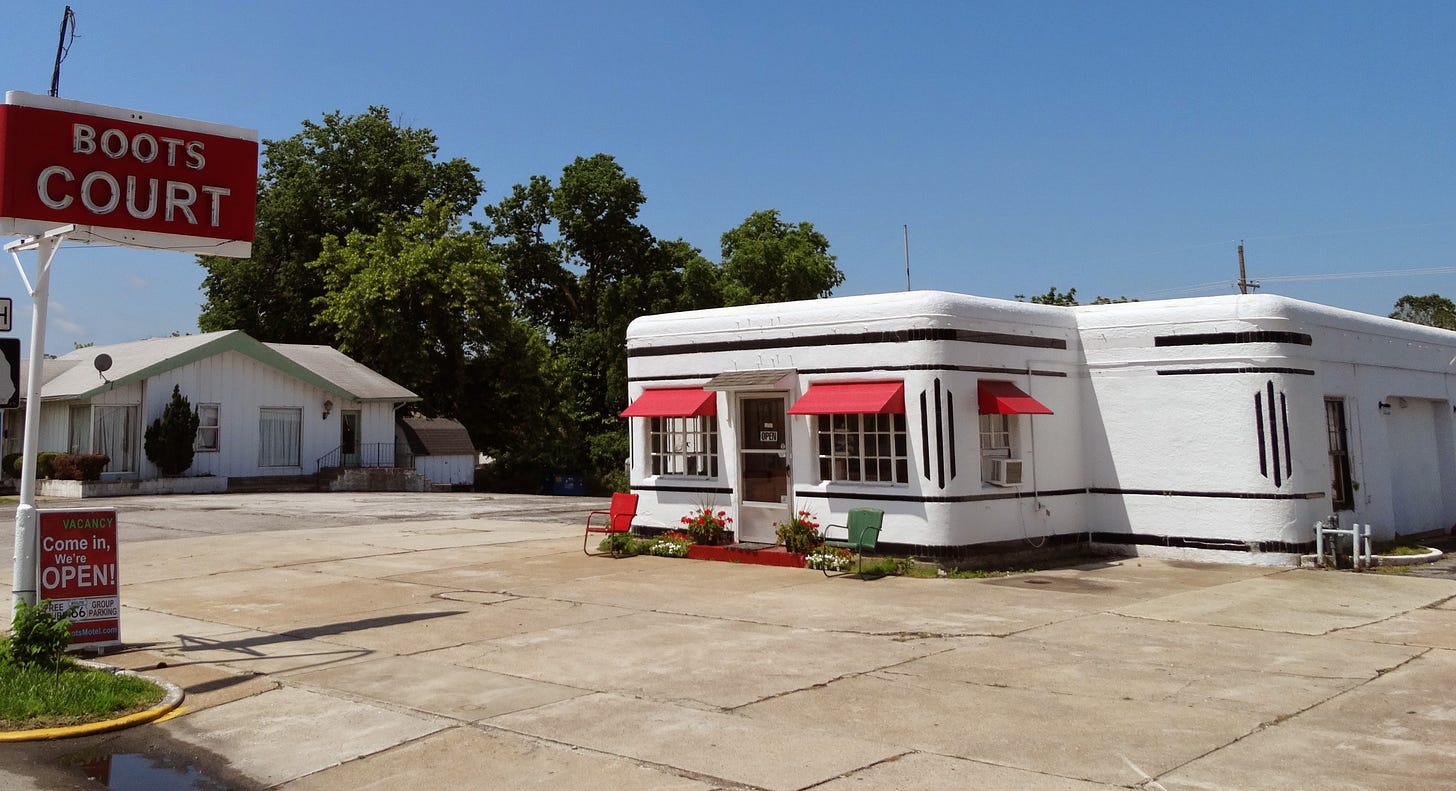

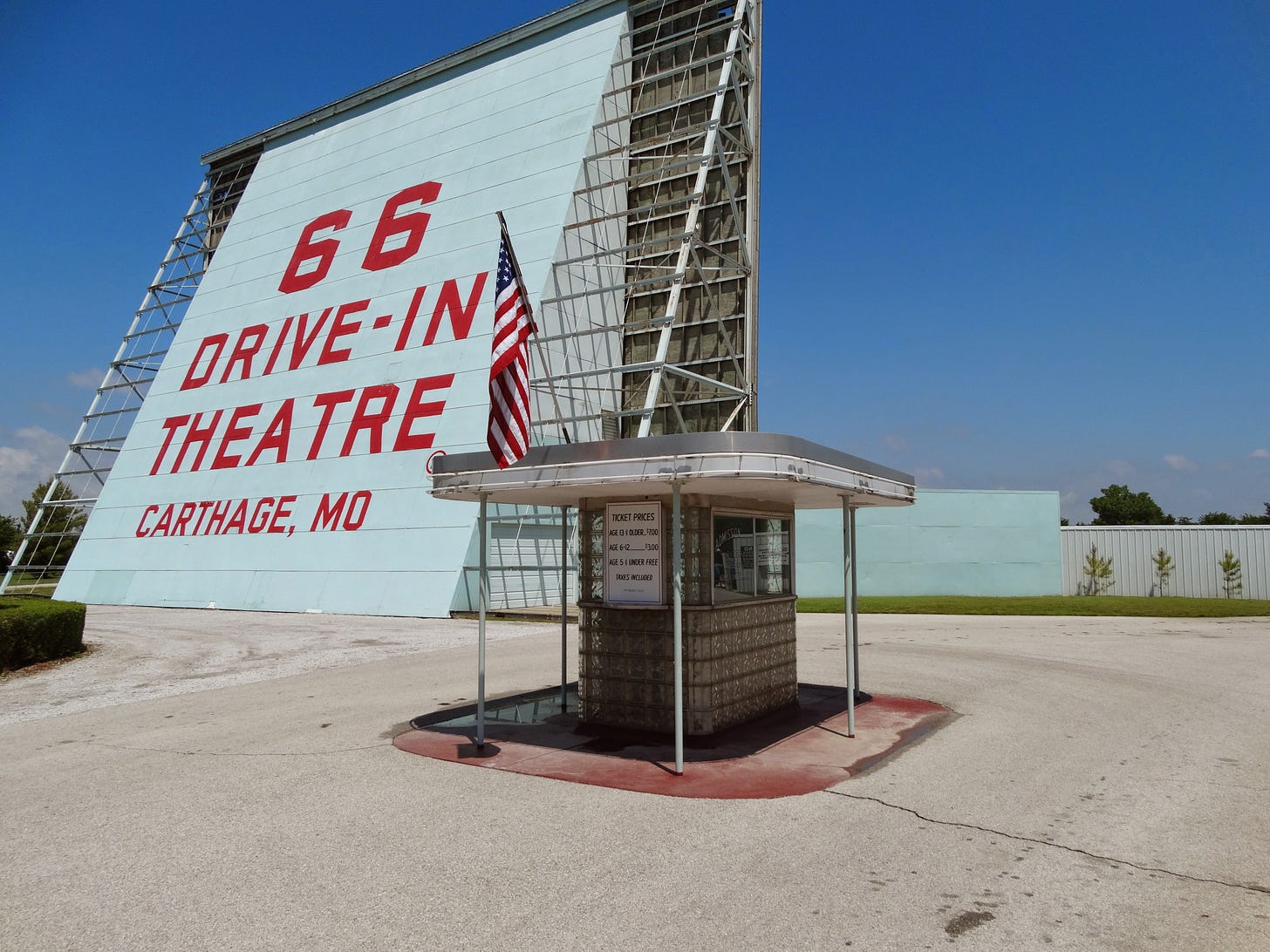
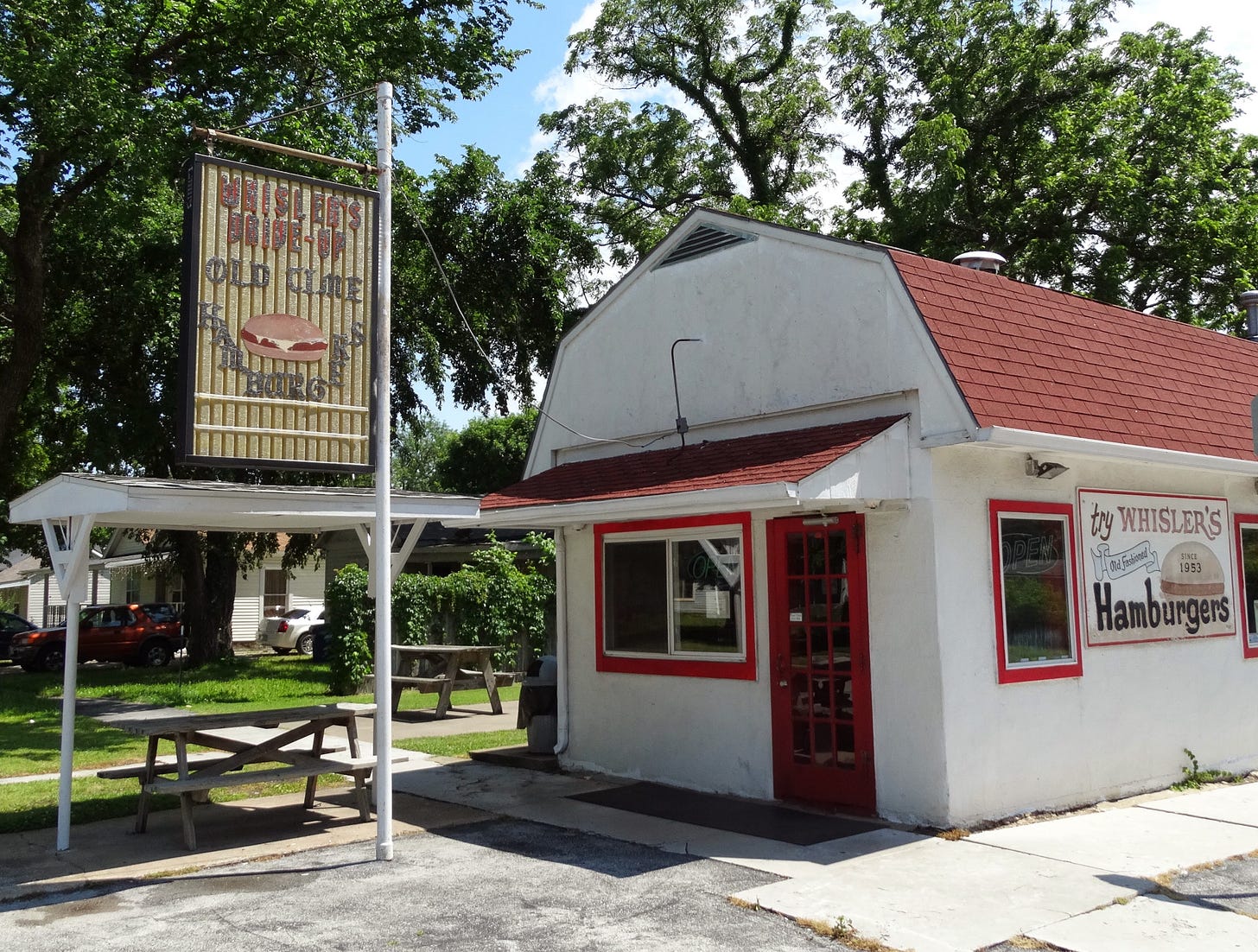
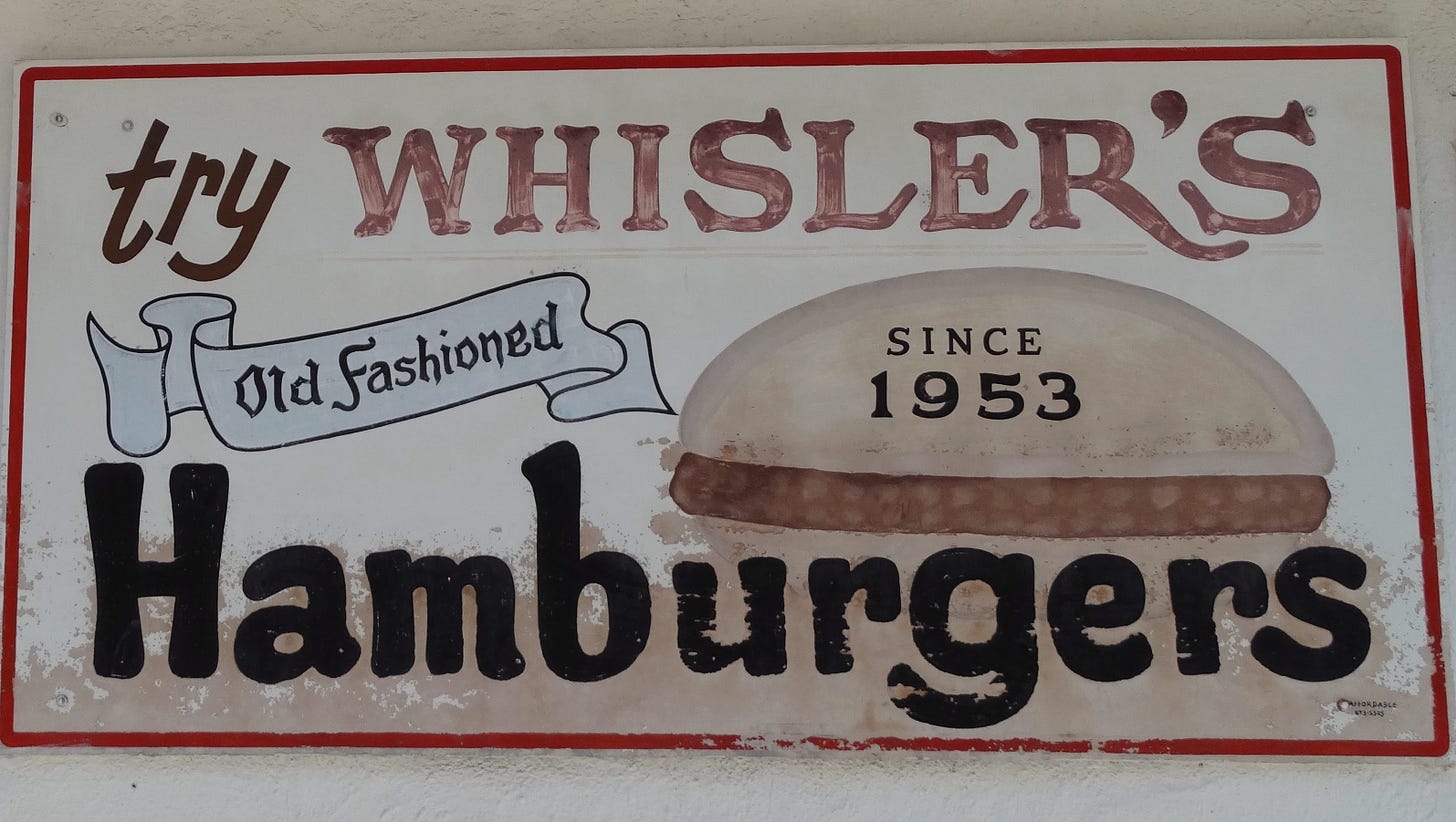
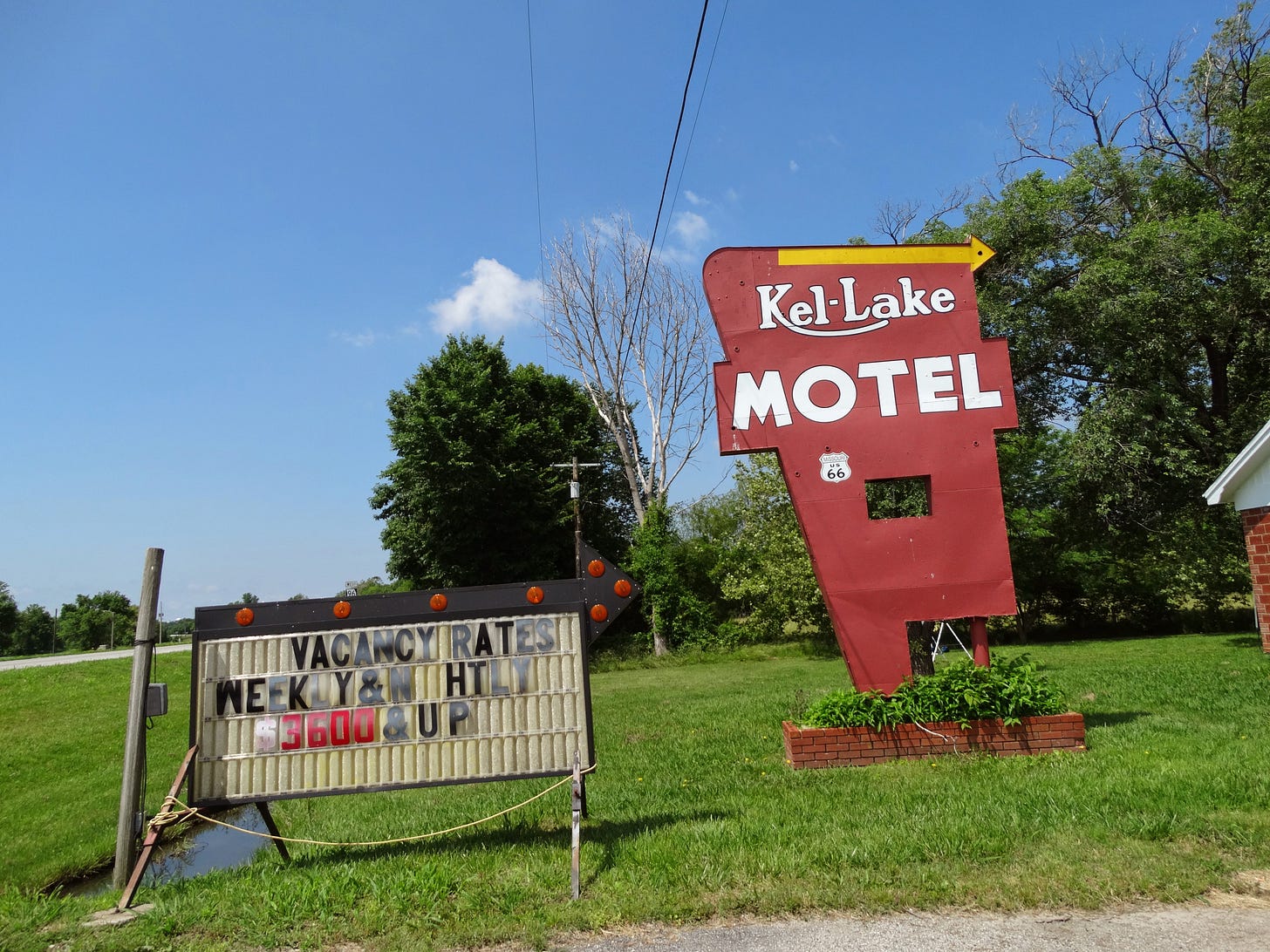
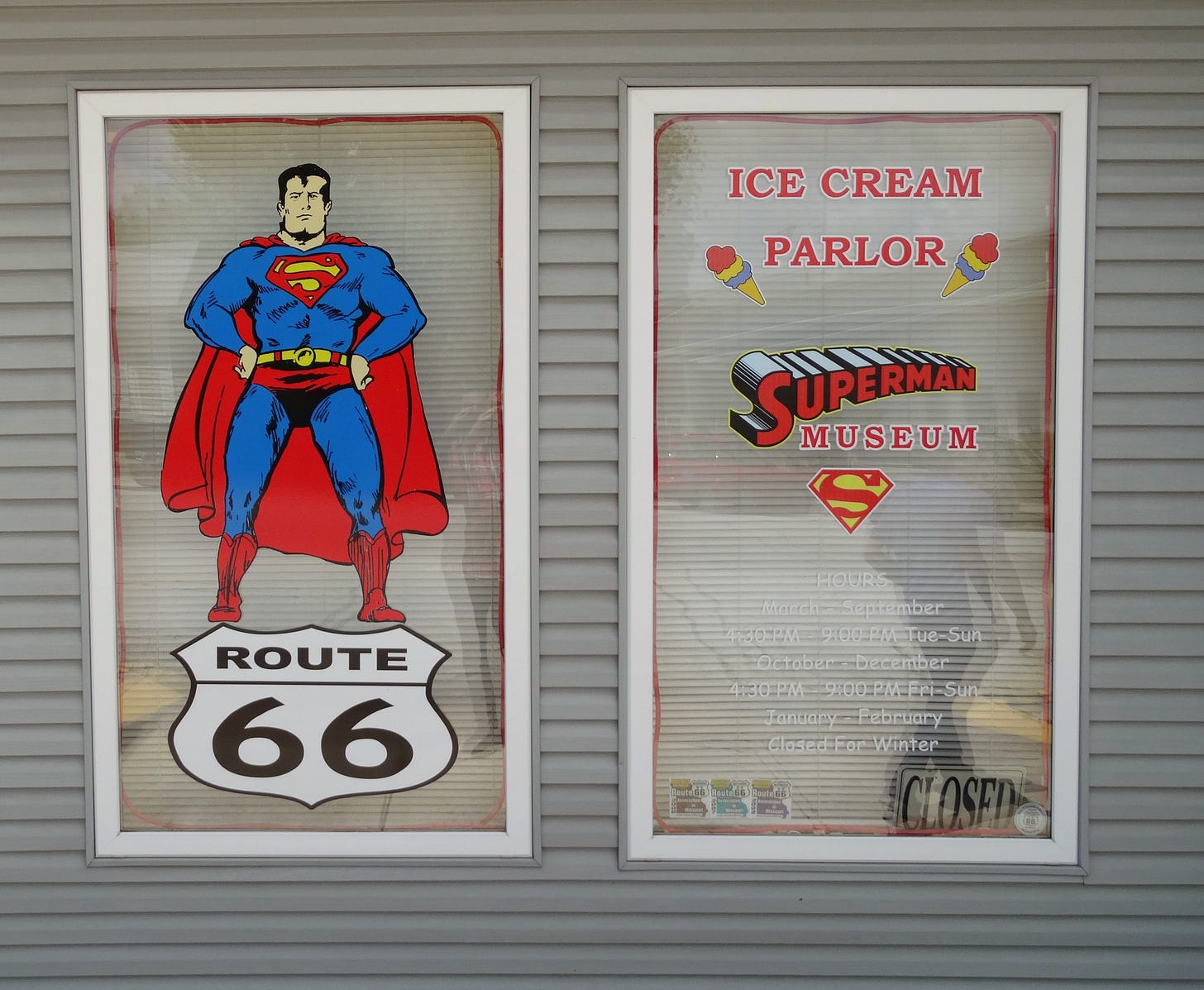

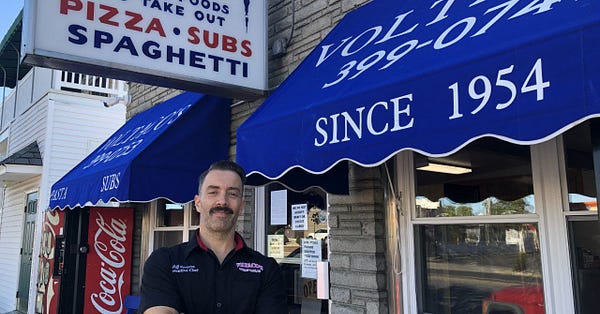


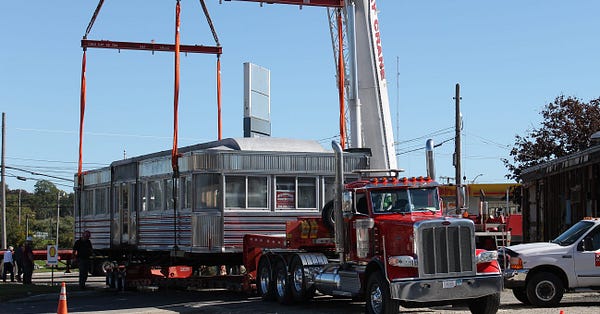




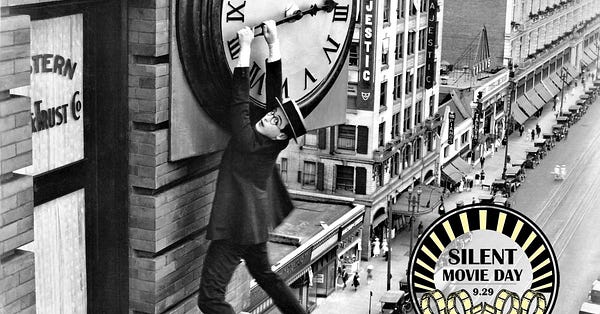
This was a great roundup of Fotomat's history and some locations that are repurposed! Thanks for the shout out too!
There are also some similar photo-developing "Picture Island" locations in NY which you might want to check out -- bottom of this page:
https://www.roadarch.com/eateries/nyic2.html